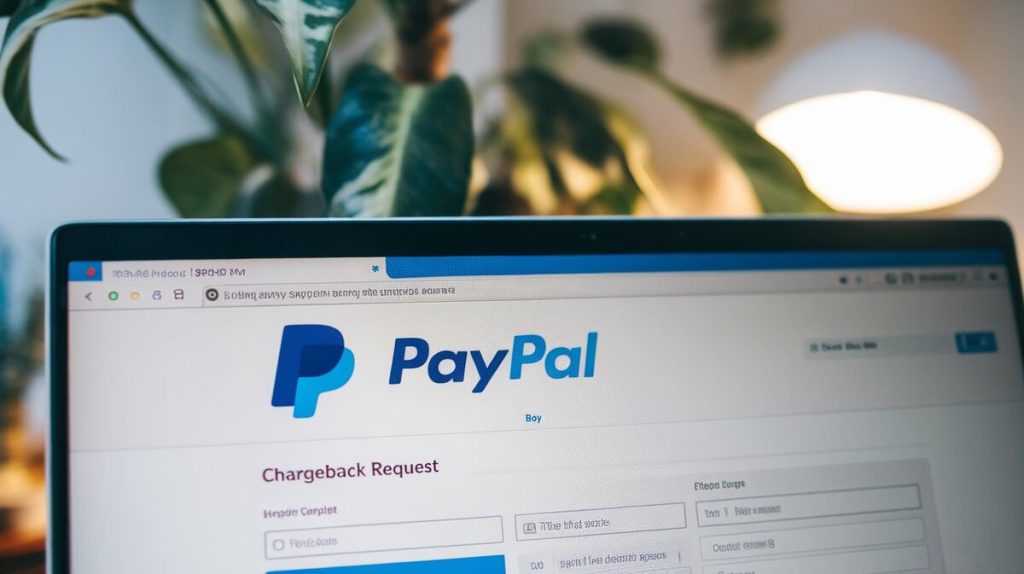Introduction
In eCommerce, chargebacks are a common problem that can significantly impact your business. A PayPal chargeback occurs when a customer disputes a transaction and requests a reversal through their credit card issuer, bypassing PayPal’s internal dispute process. This results in a freeze on the disputed funds and potential financial losses for your business. Knowing how to effectively handle chargebacks is essential for any online merchant.
Understanding PayPal Chargebacks
A PayPal chargeback happens when a customer contacts their credit card company to reverse a charge. This is different from a PayPal dispute or claim, where the resolution is handled within PayPal. Common reasons for chargebacks include:
- Item not received: The customer claims the product was not delivered.
- Item not as described: The product received is different from what was advertised.
- Unauthorized transaction: The customer claims they did not authorize the purchase.
- Billing errors: The customer was charged incorrectly.
PayPal doesn’t decide the outcome of chargebacks. The credit card company does, making it crucial to present strong evidence to support your case.
Steps to Win a PayPal Chargeback
1. Identify the Reason Code
The first step in addressing a chargeback is understanding the reason code provided by the credit card company. Each reason code corresponds to a specific issue raised by the customer. For example, Visa reason code 30 relates to services not provided or merchandise not received, while MasterCard reason code 4853 deals with goods or services not as described.
Table 1: Common Chargeback Reason Codes and Their Meanings
| Credit Card Network | Reason Code | Description | Response Tips |
|---|---|---|---|
| Visa | 30 | Services not provided or merchandise not received | Provide proof of delivery and tracking information. |
| MasterCard | 4853 | Goods/services not as described | Provide evidence of accurate product descriptions and communications. |
| Discover | 4542 | Cardholder does not recognize the transaction | Provide transaction records and communication with the customer. |
| American Express | C08 | Merchandise/service not received | Provide proof of delivery and correspondence records. |
Understanding the reason code helps you tailor your response to address the specific complaint.
2. Gather Evidence
Winning a chargeback depends on the quality of the evidence you provide. Key evidence includes:
- Proof of delivery: Tracking information or signed delivery confirmation.
- Transaction records: Detailed records of the transaction, including date, amount, and payment method.
- Communication logs: Emails, chat transcripts, or other messages exchanged with the buyer.
- Product photos: Images of the product that match the description on your site.
This evidence should directly address the reason for the chargeback. For example, if the customer claims the item was not received, proof of delivery is essential.
3. Submit Your Response
Submit your evidence through PayPal’s Resolution Center within the 10-day window allowed for chargeback responses. Your submission should include a rebuttal letter that clearly explains why the chargeback is invalid, supported by your evidence.
Table 2: Recommended Documentation for Common Chargeback Scenarios
| Scenario | Required Documentation | Additional Tips |
|---|---|---|
| Item not received | Proof of delivery, tracking number | Include screenshots from the shipping provider’s tracking page. |
| Item not as described | Product descriptions, photos, customer communication | Highlight disclaimers or terms of service agreed to by the customer. |
| Unauthorized transaction | Transaction records, IP address logs, customer communication | Provide evidence of previous transactions with the same customer, if applicable. |
| Billing errors | Transaction history, invoice copies, refund records if any | Show clear records of billing and any corrections made. |
The rebuttal letter should be professional and focus on the facts. Avoid emotional language or unsubstantiated claims.
4. Follow Up and Monitor the Status
After submitting your response, monitor the status of the chargeback in the PayPal Resolution Center. Chargeback disputes can take up to 75 days to resolve, depending on the complexity of the case and the credit card company’s policies. During this period, remain proactive and responsive to any additional requests for information.
If you lose the chargeback, PayPal provides an option to appeal the decision within a specified time frame.

Tips for Preventing PayPal Chargebacks
Preventing chargebacks is preferable to disputing them. Here are some strategies:
- Clear Communication: Ensure product descriptions are accurate and complete.
- Prompt Shipping: Use reliable shipping services and provide tracking information immediately.
- Fraud Detection Tools: Utilize PayPal’s fraud detection tools to identify and block suspicious transactions.
- Use PayPal’s Seller Protection: PayPal offers Seller Protection for eligible transactions, covering you against claims and chargebacks for items not received or unauthorized transactions.
Table 3: PayPal Seller Protection vs. Chargeback Protection
| Protection Type | Coverage | Requirements |
|---|---|---|
| Seller Protection | Unauthorized transactions, items not received | Must ship to the address provided by PayPal; provide proof of delivery. |
| Chargeback Protection | Fraudulent chargebacks (unauthorized transactions, item not received) | Requires enrollment in PayPal’s Advanced Credit and Debit Card checkout. |
Merchanto.org, an official partner of Visa and MasterCard in the chargeback prevention sector, offers solutions that can help protect your business from chargebacks. Visit Merchanto.org for more information.

What to Do If You Lose a Chargeback
If you lose a chargeback, here’s what you can do:
- Analyze the Outcome: Review the decision to understand why the chargeback was awarded to the customer. This can help you identify gaps in your process or evidence submission.
- Appeal the Decision: If you believe the decision was unjust, you can appeal within PayPal’s specified time frame. Ensure that your appeal includes new or additional evidence that was not previously submitted.
- Learn and Adapt: Use the experience as a learning opportunity to refine your processes and reduce the likelihood of future chargebacks.
Conclusion
Winning a PayPal chargeback requires understanding the process, gathering the right evidence, and being proactive in your business practices. Following the steps outlined in this guide and using tools like PayPal Seller Protection can increase your chances of success.
By integrating these best practices into your operations, you can minimize the risk of chargebacks and ensure the long-term success of your business.



